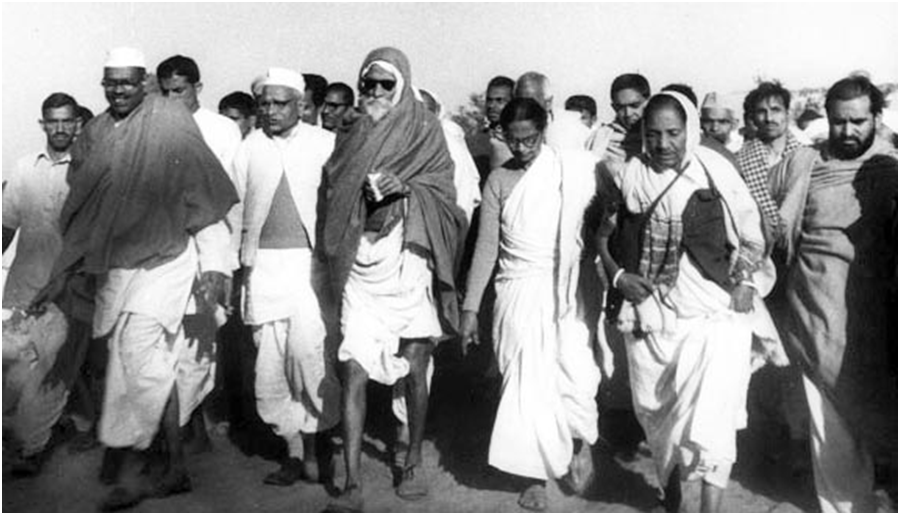
QUES . Critically discuss the objectives of Bhoodan and Gramdan movement, initiated by Acharya Vinoba Bhave and their success. UPSC 2013 G S MAINS PAPER 1
HINTS:

The Bhoodan and Gramdan movements led by Vinoba Bhave attempted to bring about a ‘Non-Violent Revolution’ in India’s land reforms programme. These integrated movements were an attempt to implement land reforms by urging the landed classes to voluntarily surrender a part of their land to the landless. The Bhoodan was started in 1951.
It sought to collect land as a gift from Zamindars, rich farmers and those who could give and redistribute it among the landless. The Bhoodan movement targeted to collect 50 million acres of land by persuading individual farmers to give away at least one-sixth of their land as gift.
The problems of Harijans in Pochampalli and Telangana were brought before Vinoba Bhave. The latter, requested some land owning classes, who agreed to donate some part of their land to Harijan. This led to the birth of Bhoodan movement.
Central and State governments too provided the necessary assistance to Vinoba Bhave. Later, Bhoodan gave way to the Gramdan movement, which began in 1952.
The objective of the Gramdan movement was to persuade landowners and leaseholders in each village to renounce their land rights, the lands would now become the property of a village association for the egalitarian redistribution and joint cultivation.
A village is declared as Gramdan when at least 75 per cent of its residents with 51 per cent of the land signify their approval in writing for Gramdan. The first village to come under Gramdan, was Magroth, Haripur, Uttar Pradesh. The movement received widespread political patronage.
Several State Government passed laws aimed at Gramdan and Bhoodan. The movement reached its peak around 1969.
However, the Bhoodan and Gramdan movements lost their importance due to the followings reasons:
• From a purely voluntary movement, it now changed to a government supported programme.
• A lot of unfit land, for cultivation was donated, while the land was still under dispute.
• In many cases, the farmers took back their land.
• Bribery too became prevalent, while distributing the donated land.
• A lot of donated land remained undistributed.
• Gramdan too did not achieve much success. The movement was successful in tribal areas, where there was a little disparity in ownership of the land.
Despite their failures, both these movements were very important. They stimulated political activity among the farmers and created a consciousness among the masses about inequality prevalent in the society.
Must read: Role of the Peoples’ movement towards the integration of Princely States
External link: https://en.wikipedia.org/wiki/Bhoodan_movement
